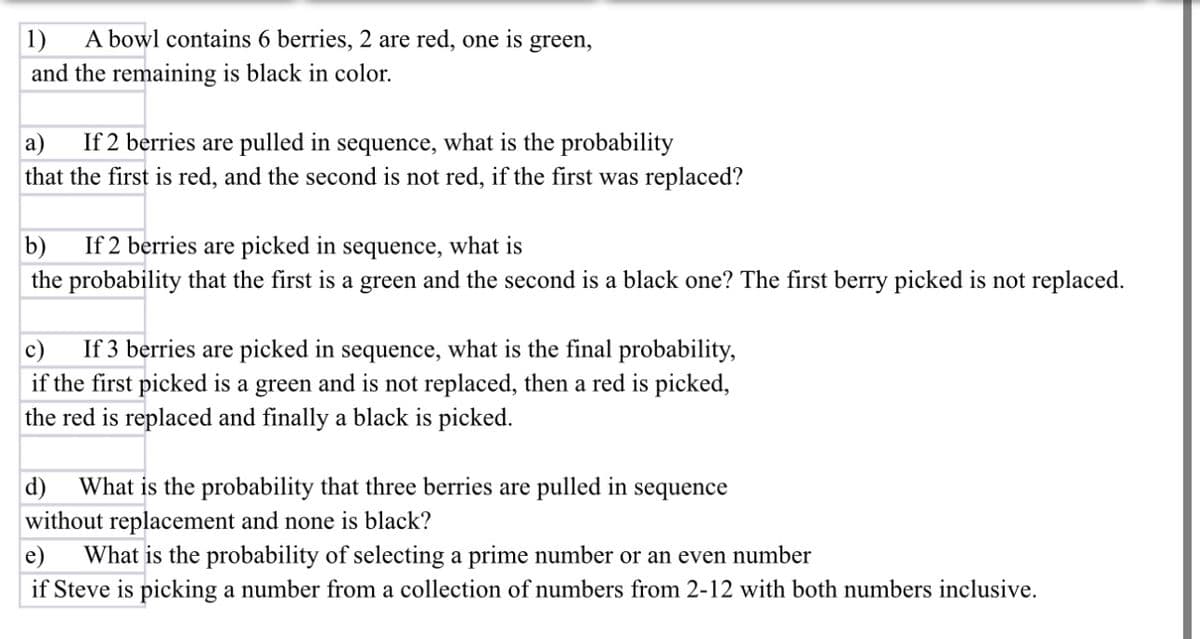a) If 2 berries are pulled in sequence, what is the probability that the first is red, and the second is not red, if the first was replaced? b) If 2 berries are picked in sequence, what is the probability that the first is a green and the second is a black one? The first berry picked is not replaced. c) If 3 berries are picked in sequence, what is the final probability, if the first picked is a green and is not replaced, then a red is picked, the red is replaced and finally a black is picked.
a) If 2 berries are pulled in sequence, what is the probability that the first is red, and the second is not red, if the first was replaced? b) If 2 berries are picked in sequence, what is the probability that the first is a green and the second is a black one? The first berry picked is not replaced. c) If 3 berries are picked in sequence, what is the final probability, if the first picked is a green and is not replaced, then a red is picked, the red is replaced and finally a black is picked.
A First Course in Probability (10th Edition)
10th Edition
ISBN:9780134753119
Author:Sheldon Ross
Publisher:Sheldon Ross
Chapter1: Combinatorial Analysis
Section: Chapter Questions
Problem 1.1P: a. How many different 7-place license plates are possible if the first 2 places are for letters and...
Related questions
Question

Transcribed Image Text:1) A bowl contains 6 berries, 2 are red, one is green,
and the remaining is black in color.
a) If 2 berries are pulled in sequence, what is the probability
that the first is red, and the second is not red, if the first was replaced?
b) If 2 berries are picked in sequence, what is
the probability that the first is a green and the second is a black one? The first berry picked is not replaced.
c) If 3 berries are picked in sequence, what is the final probability,
if the first picked is a green and is not replaced, then a red is picked,
the red is replaced and finally a black is picked.
d) What is the probability that three berries are pulled in sequence
without replacement and none is black?
e) What is the probability of selecting a prime number or an even number
if Steve is picking a number from a collection of numbers from 2-12 with both numbers inclusive.
Expert Solution
This question has been solved!
Explore an expertly crafted, step-by-step solution for a thorough understanding of key concepts.
Step by step
Solved in 4 steps

Follow-up Questions
Read through expert solutions to related follow-up questions below.
Follow-up Question
According to the table above please answer d and e as well.
Solution
Recommended textbooks for you

A First Course in Probability (10th Edition)
Probability
ISBN:
9780134753119
Author:
Sheldon Ross
Publisher:
PEARSON


A First Course in Probability (10th Edition)
Probability
ISBN:
9780134753119
Author:
Sheldon Ross
Publisher:
PEARSON
